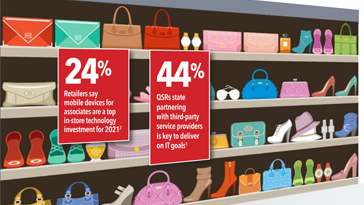Managed SD-WAN
Simplify your distributed network, tackle your security and operational challenges, and maximize your return on investment with Managed SD-WAN solutions.
Distributed organizations face unique challenges when it comes to their networks. Branches can have vastly different broadband access types and infrastructures. This lack of unity wreaks havoc on overall network performance. Adding cloud-based applications to the mix only compounds the problem.
Software-Defined Wide Area Network, also known as SD-WAN, is the next-generation solution to solve these problems. As a trusted managed services leader, Hughes delivers on the promise of SD-WAN. The award-winning Hughes Managed SD-WAN solution transforms ordinary broadband connections into enterprise-grade, high-performance Wide Area Networks (WANs).
Interested in SD-WAN solutions around the world? Discover our solutions in Europe, Brazil, India and Latin America.
Businesses with distributed networks are seeing network cost savings of up to 60% by transitioning from MPLS to broadband. Leverage our innovation and experience as the largest non-carrier managed network services provider in North America to simplify your network, meet and exceed your security challenges, and save money.
Count on the team that manages more network endpoints in North America than the next three managed services companies combined. We blend the best of wireline, wireless, and satellite broadband transports, state-of-the-art management systems, and a dedicated program management team to ensure you receive best-in-class services.
Download the solution sheet
to learn why Hughes is the partner of choice for your Managed SD-WAN needs.
What Is Managed SD-WAN?
-
It is an end-to-end turnkey network that can be implemented on an existing network infrastructure quickly and easily.
-
It delivers dynamic load sharing across multiple connections for better traffic flow. At the heart of SD-WAN is the Active/Active capability to dynamically allocate traffic across two active paths.
-
It simplifies distributed networking through 24/7 WAN management, zero-touch configuration, and web-based network performance management.
-
It is agnostic to WAN transport.
Key Advantages of Managed SD-WAN
-
Industry-leading security
-
Fully managed service delivery
-
Faster processing and an improved end user experience
-
Non-stop application delivery
-
Guaranteed real-time application quality (ideal for video and VoIP)
8 SD-WAN Fit Points
Today’s unique business needs require an SD-WAN solution that measures up to deliver success. Here are the 8 fit points to help you assess requirements and deliver an SD-WAN solution tailored specifically for your needs.
-
Agility and Flexibility – Ramp up cloud usage, scale bandwidth, spin up new environments. Run different configs at different sites
-
Security – Keep threat actors at bay without slowing down your team
-
Cloud Access – From cloud acceleration to WAN optimization, we've got you covered
-
Bandwidth and Costs – When comparing SD-WAN solutions, both underlay and overlay cost must be addressed
-
Real-Time Applications – Don't put your business on hold because your network can't prioritize real-time apps
-
Analytics and Visibility – With AI-driven operational tools, we deliver single pane-of-glass visibility across every layer of a network selected specifically for your needs
-
Services and Support – Fully managed? DIY? Think carefully about the support you need
-
Partnership Stack – We offer a wide range of SD-WAN solutions from best-in-class vendors, backed by the expertise to find the right solution for you
Related Resources











